-
 Bitcoin
Bitcoin $105,497.5085
4.42% -
 Ethereum
Ethereum $2,422.4861
8.54% -
 Tether USDt
Tether USDt $1.0008
0.06% -
 XRP
XRP $2.1637
7.27% -
 BNB
BNB $640.6631
3.94% -
 Solana
Solana $144.7501
9.37% -
 USDC
USDC $1.0000
0.01% -
 TRON
TRON $0.2732
3.36% -
 Dogecoin
Dogecoin $0.1648
8.94% -
 Cardano
Cardano $0.5829
7.81% -
 Hyperliquid
Hyperliquid $38.1039
6.54% -
 Sui
Sui $2.8200
15.09% -
 Bitcoin Cash
Bitcoin Cash $463.0927
1.91% -
 Chainlink
Chainlink $12.9052
10.84% -
 UNUS SED LEO
UNUS SED LEO $9.1023
1.10% -
 Stellar
Stellar $0.2456
7.38% -
 Avalanche
Avalanche $18.0376
9.64% -
 Toncoin
Toncoin $2.9069
6.48% -
 Shiba Inu
Shiba Inu $0.0...01160
10.05% -
 Litecoin
Litecoin $85.0951
6.12% -
 Hedera
Hedera $0.1513
13.24% -
 Monero
Monero $308.4459
3.65% -
 Ethena USDe
Ethena USDe $1.0008
0.04% -
 Polkadot
Polkadot $3.4084
8.03% -
 Dai
Dai $1.0003
0.02% -
 Bitget Token
Bitget Token $4.1719
3.32% -
 Uniswap
Uniswap $6.8443
9.44% -
 Pepe
Pepe $0.0...09942
12.13% -
 Pi
Pi $0.5357
6.85% -
 Aave
Aave $256.4669
12.95%
Explore the World of Web3: Essential Beginner and Advanced Guides for Beginners
Web3 is a decentralized internet built on blockchain, enabling dApps, DeFi, and NFTs; start with a crypto wallet like MetaMask to explore this new digital frontier.
Jun 10, 2025 at 04:07 pm
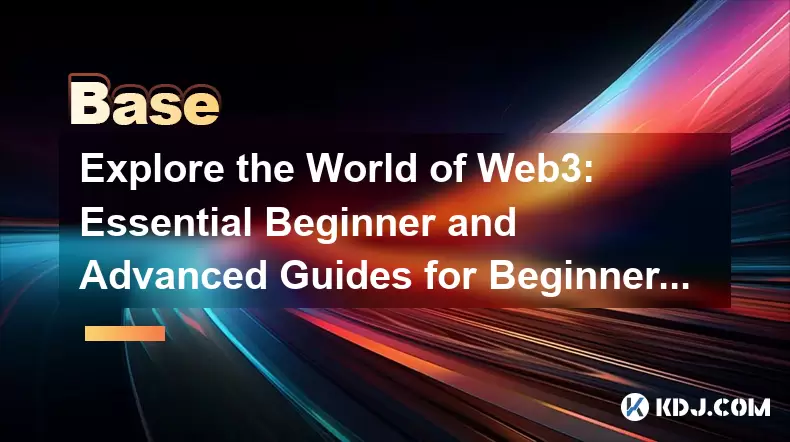
Web3 represents the next evolution of the internet, where decentralized technologies such as blockchain and cryptocurrencies play a central role. For those looking to dive into this fascinating world, understanding the basics and advanced concepts is crucial. This guide will walk you through essential beginner and advanced guides, helping you navigate the complexities of Web3 with confidence.
Understanding the Basics of Web3
Web3 is a term used to describe the vision of a new, decentralized internet built on blockchain technology. Unlike the current internet (Web2), which is largely controlled by centralized entities, Web3 aims to empower users by giving them control over their data and digital assets.
At its core, blockchain technology enables the creation of decentralized applications (dApps) that operate on a peer-to-peer network, eliminating the need for intermediaries. This foundation is what allows for the development of cryptocurrencies, decentralized finance (DeFi), and non-fungible tokens (NFTs), among other innovations.
To begin your journey in Web3, you need to understand the following key concepts:
- Cryptocurrencies: Digital or virtual currencies that use cryptography for security. Bitcoin and Ethereum are the most well-known examples.
- Wallets: Software programs or physical devices that store your private and public keys, allowing you to interact with the blockchain.
- Smart Contracts: Self-executing contracts with the terms of the agreement directly written into code, which run on the blockchain.
Setting Up Your First Crypto Wallet
Before you can start using Web3 applications, you need to set up a cryptocurrency wallet. Here’s how to get started:
- Choose a Wallet: There are various types of wallets, including software wallets (like MetaMask), hardware wallets (like Ledger), and paper wallets. For beginners, a software wallet like MetaMask is often recommended due to its ease of use.
- Download and Install: Visit the official website of the wallet you’ve chosen (e.g., MetaMask.io) and download the extension for your browser or the mobile app.
- Create a New Wallet: Follow the on-screen instructions to create a new wallet. You will be asked to set a strong password.
- Secure Your Recovery Phrase: You will be given a recovery phrase (also known as a seed phrase). Write this down and store it in a safe place. This phrase is essential for recovering your wallet if you lose access.
- Add Funds: Once your wallet is set up, you can add funds by purchasing cryptocurrency from an exchange and transferring it to your wallet address.
Exploring Decentralized Applications (dApps)
Decentralized applications, or dApps, are a cornerstone of Web3. These applications run on a blockchain network and are not controlled by a single entity. To explore dApps, follow these steps:
- Connect Your Wallet: Most dApps require you to connect your cryptocurrency wallet to interact with them. Use the "Connect Wallet" button on the dApp's interface and select your wallet from the list.
- Browse Popular dApps: Start with well-known dApps like Uniswap for decentralized trading, Aave for lending and borrowing, or OpenSea for buying and selling NFTs.
- Interact with dApps: Once connected, you can use the dApp's features. For example, on Uniswap, you can swap different cryptocurrencies; on Aave, you can lend or borrow assets; and on OpenSea, you can purchase NFTs.
Diving into Decentralized Finance (DeFi)
Decentralized Finance, or DeFi, is a subset of Web3 that aims to recreate traditional financial systems on the blockchain. DeFi platforms allow users to lend, borrow, trade, and earn interest on their cryptocurrency holdings without intermediaries.
To get started with DeFi, you should:
- Understand the Risks: DeFi can be lucrative but also comes with significant risks, including smart contract vulnerabilities and market volatility. Always do your research before investing.
- Choose a Platform: Popular DeFi platforms include Aave, Compound, and MakerDAO. Each platform offers different services, so choose one that aligns with your financial goals.
- Interact with the Platform: Connect your wallet to the platform and start using its services. For example, on Aave, you can deposit your cryptocurrency to earn interest or borrow against your holdings.
Advanced Concepts in Web3: Smart Contracts and NFTs
As you become more comfortable with the basics of Web3, you can explore more advanced concepts such as smart contracts and non-fungible tokens (NFTs).
Smart Contracts are self-executing contracts with the terms directly written into code. They automatically enforce and execute the terms of an agreement, making them ideal for various applications, including DeFi and NFTs. To interact with smart contracts, you need to:
- Understand Solidity: Solidity is the programming language used to write smart contracts on the Ethereum blockchain. You can learn Solidity through online courses and tutorials.
- Deploy a Smart Contract: Use a development environment like Remix to write, compile, and deploy your smart contract to the Ethereum blockchain.
- Interact with Deployed Contracts: Once deployed, you can interact with your smart contract using tools like Web3.js or Ethers.js, which allow you to call functions and send transactions.
Non-Fungible Tokens (NFTs) are unique digital assets that represent ownership of a specific item or piece of content. NFTs are often used for digital art, collectibles, and in-game items. To get involved with NFTs, you should:
- Understand the Value Proposition: NFTs derive their value from their uniqueness and the perceived value of the item they represent. Research popular NFT projects to understand what drives their value.
- Create or Purchase NFTs: Use platforms like OpenSea to create and mint your own NFTs or purchase existing ones. To mint an NFT, you will need to connect your wallet, upload your digital asset, and pay a minting fee.
- Trade NFTs: Once you own NFTs, you can list them for sale on marketplaces like OpenSea. Set your desired price and wait for buyers to make offers.
Participating in Decentralized Autonomous Organizations (DAOs)
Decentralized Autonomous Organizations (DAOs) are another advanced concept in Web3. DAOs are organizations run by code and governed by their members, who make decisions through voting. To participate in a DAO, follow these steps:
- Join a DAO: Research existing DAOs and choose one that aligns with your interests. Popular DAOs include MakerDAO and Uniswap's governance.
- Acquire Governance Tokens: Most DAOs use governance tokens to allow members to vote on proposals. Purchase or earn these tokens to participate in governance.
- Vote on Proposals: Once you have governance tokens, you can vote on proposals that affect the DAO's operations and future direction. Use the DAO's platform to cast your vote.
Frequently Asked Questions
Q: Can I use Web3 applications without a cryptocurrency wallet?
A: No, to interact with Web3 applications, you need a cryptocurrency wallet to manage your digital assets and connect to the blockchain.
Q: What are the main differences between Web2 and Web3?
A: Web2 is centralized and controlled by large corporations, whereas Web3 is decentralized and aims to give users more control over their data and digital assets.
Q: How do I ensure the security of my cryptocurrency wallet?
A: To ensure the security of your wallet, use strong passwords, enable two-factor authentication, keep your recovery phrase offline and secure, and be cautious of phishing attempts.
Q: Are there any costs associated with using Web3 applications?
A: Yes, using Web3 applications often involves transaction fees (known as gas fees on Ethereum) and other costs, such as minting fees for NFTs. Always consider these costs before using a Web3 service.
Disclaimer:info@kdj.com
The information provided is not trading advice. kdj.com does not assume any responsibility for any investments made based on the information provided in this article. Cryptocurrencies are highly volatile and it is highly recommended that you invest with caution after thorough research!
If you believe that the content used on this website infringes your copyright, please contact us immediately (info@kdj.com) and we will delete it promptly.
- Circle's Stablecoin Soars: A $62 Billion Power Play
- 2025-06-24 06:25:12
- Ruvi AI: Is It Really Poised to Eclipse Tron and Other Crypto Giants?
- 2025-06-24 07:05:12
- Neo Pepe Coin: The Meme Token Taking Over Crypto Presales
- 2025-06-24 06:45:12
- Solana, Pepe, and Crypto Risk: Navigating the Meme Coin Mania
- 2025-06-24 07:05:12
- COIN Act: Curbing Crypto Profiteering by Public Officials – A Necessary Step?
- 2025-06-24 06:25:12
- Ethereum Whales Accumulate: Smart Money Betting on ETH Rebound?
- 2025-06-24 07:25:16
Related knowledge
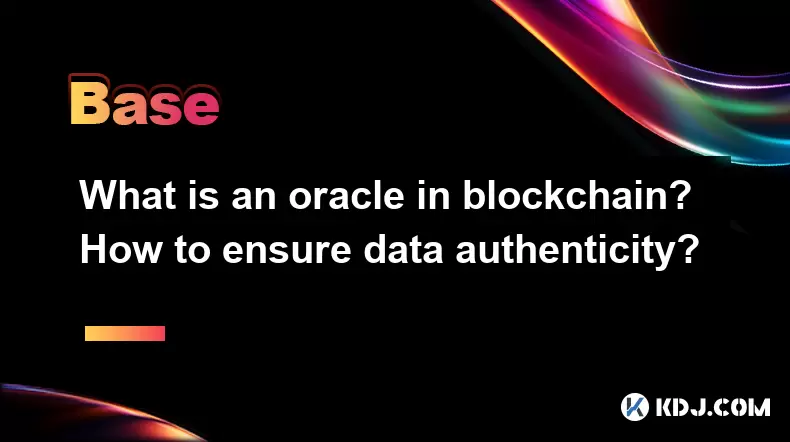
What is an oracle in blockchain? How to ensure data authenticity?
Jun 19,2025 at 08:49pm
Understanding the Role of an Oracle in BlockchainIn the context of blockchain technology, an oracle serves as a bridge between the blockchain and external data sources. While blockchains are inherently secure and decentralized, they cannot access real-world information on their own. Oracles enable smart contracts to interact with off-chain data such as ...
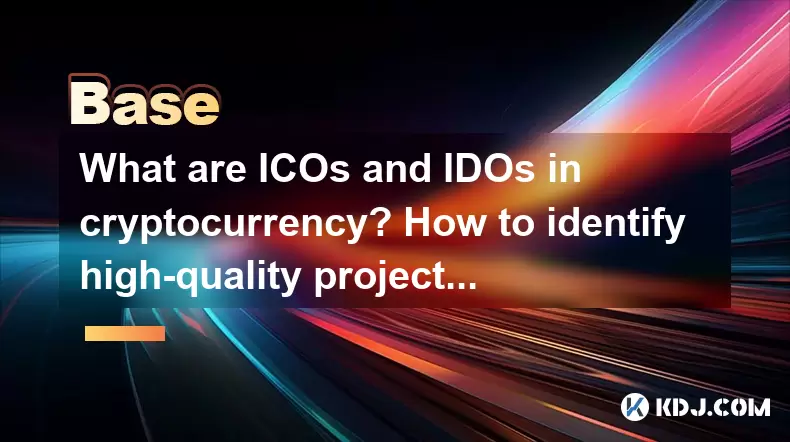
What are ICOs and IDOs in cryptocurrency? How to identify high-quality projects?
Jun 22,2025 at 11:49am
Understanding ICOs in CryptocurrencyInitial Coin Offerings (ICOs) are fundraising mechanisms used by cryptocurrency startups to raise capital for their projects. In an ICO, a company creates and sells its own tokens to investors in exchange for established cryptocurrencies like Bitcoin or Ethereum. The process typically involves the release of a whitepa...
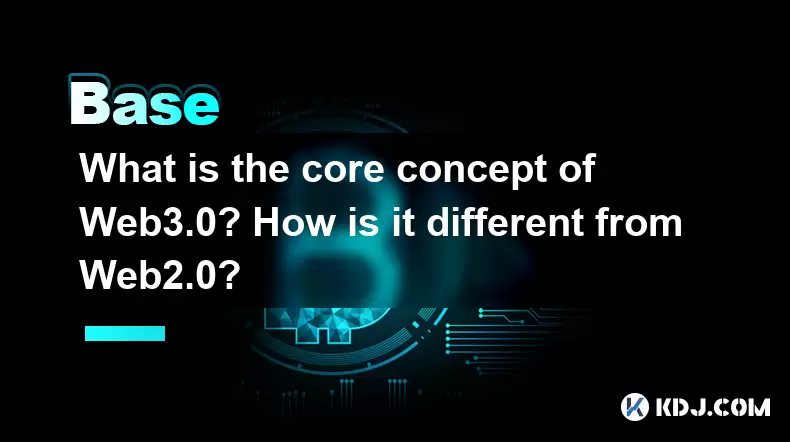
What is the core concept of Web3.0? How is it different from Web2.0?
Jun 21,2025 at 05:56pm
Decentralization as the Foundation of Web3.0The core concept of Web3.0 revolves around decentralization, which fundamentally challenges the centralized architecture of Web2.0. In Web3.0, control and ownership are distributed across a network rather than being held by a central authority or corporation. This is achieved primarily through blockchain techn...
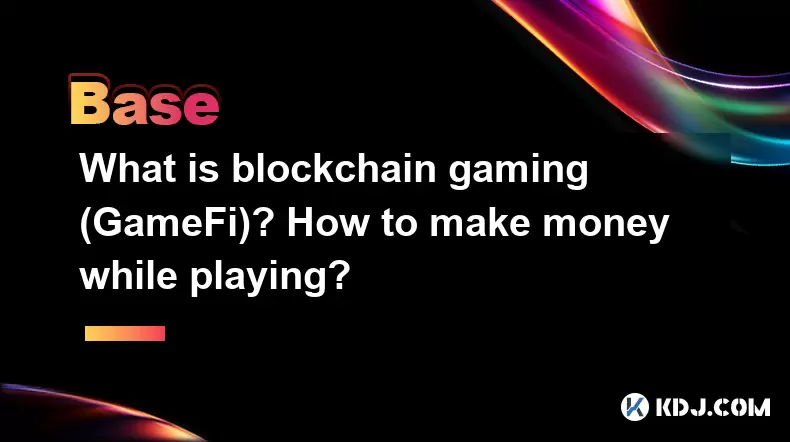
What is blockchain gaming (GameFi)? How to make money while playing?
Jun 20,2025 at 07:56am
Understanding Blockchain Gaming (GameFi)Blockchain gaming, often referred to as GameFi, is a fusion of blockchain technology and video games. It enables players to own in-game assets through non-fungible tokens (NFTs) and earn rewards via cryptocurrencies or token-based systems. Unlike traditional games where items are controlled by centralized develope...
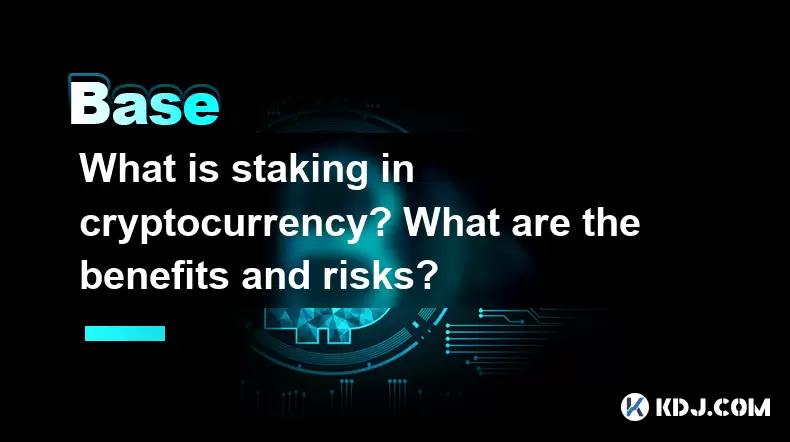
What is staking in cryptocurrency? What are the benefits and risks?
Jun 22,2025 at 10:01am
Understanding the Concept of Staking in CryptocurrencyStaking in cryptocurrency refers to the process of actively participating in transaction validation on a blockchain network that uses a Proof-of-Stake (PoS) consensus mechanism. Instead of miners competing to solve complex mathematical puzzles as in Proof-of-Work systems like Bitcoin, PoS blockchains...
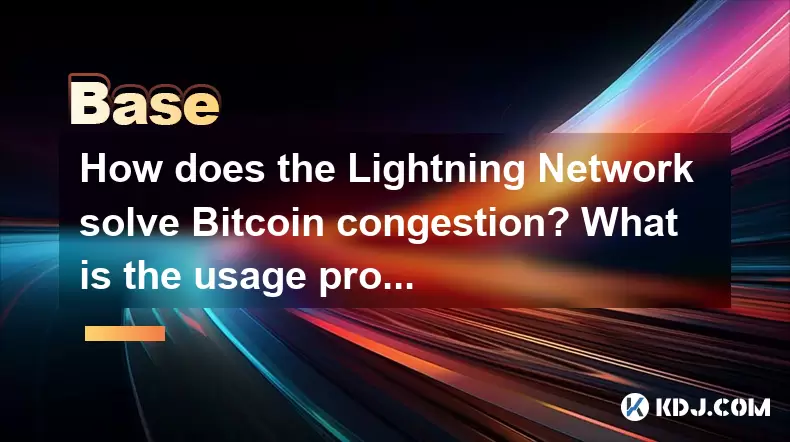
How does the Lightning Network solve Bitcoin congestion? What is the usage process?
Jun 23,2025 at 06:21pm
Understanding Bitcoin Network CongestionBitcoin, as a decentralized digital currency, operates on a blockchain that records every transaction in a public ledger. Each block has a limited size, typically 1 megabyte, which allows for only a certain number of transactions per second (TPS). When the number of transactions increases, the network becomes cong...

What is an oracle in blockchain? How to ensure data authenticity?
Jun 19,2025 at 08:49pm
Understanding the Role of an Oracle in BlockchainIn the context of blockchain technology, an oracle serves as a bridge between the blockchain and external data sources. While blockchains are inherently secure and decentralized, they cannot access real-world information on their own. Oracles enable smart contracts to interact with off-chain data such as ...

What are ICOs and IDOs in cryptocurrency? How to identify high-quality projects?
Jun 22,2025 at 11:49am
Understanding ICOs in CryptocurrencyInitial Coin Offerings (ICOs) are fundraising mechanisms used by cryptocurrency startups to raise capital for their projects. In an ICO, a company creates and sells its own tokens to investors in exchange for established cryptocurrencies like Bitcoin or Ethereum. The process typically involves the release of a whitepa...

What is the core concept of Web3.0? How is it different from Web2.0?
Jun 21,2025 at 05:56pm
Decentralization as the Foundation of Web3.0The core concept of Web3.0 revolves around decentralization, which fundamentally challenges the centralized architecture of Web2.0. In Web3.0, control and ownership are distributed across a network rather than being held by a central authority or corporation. This is achieved primarily through blockchain techn...

What is blockchain gaming (GameFi)? How to make money while playing?
Jun 20,2025 at 07:56am
Understanding Blockchain Gaming (GameFi)Blockchain gaming, often referred to as GameFi, is a fusion of blockchain technology and video games. It enables players to own in-game assets through non-fungible tokens (NFTs) and earn rewards via cryptocurrencies or token-based systems. Unlike traditional games where items are controlled by centralized develope...

What is staking in cryptocurrency? What are the benefits and risks?
Jun 22,2025 at 10:01am
Understanding the Concept of Staking in CryptocurrencyStaking in cryptocurrency refers to the process of actively participating in transaction validation on a blockchain network that uses a Proof-of-Stake (PoS) consensus mechanism. Instead of miners competing to solve complex mathematical puzzles as in Proof-of-Work systems like Bitcoin, PoS blockchains...

How does the Lightning Network solve Bitcoin congestion? What is the usage process?
Jun 23,2025 at 06:21pm
Understanding Bitcoin Network CongestionBitcoin, as a decentralized digital currency, operates on a blockchain that records every transaction in a public ledger. Each block has a limited size, typically 1 megabyte, which allows for only a certain number of transactions per second (TPS). When the number of transactions increases, the network becomes cong...
See all articles
























































































